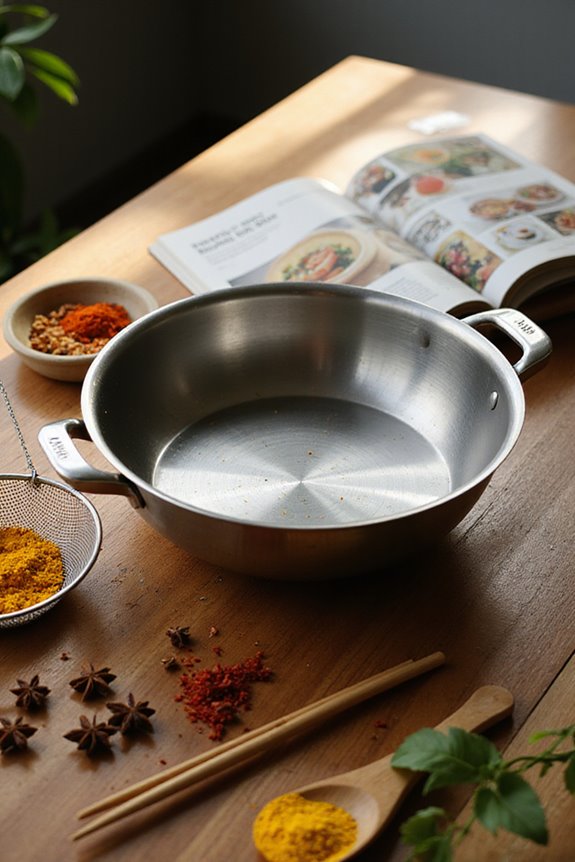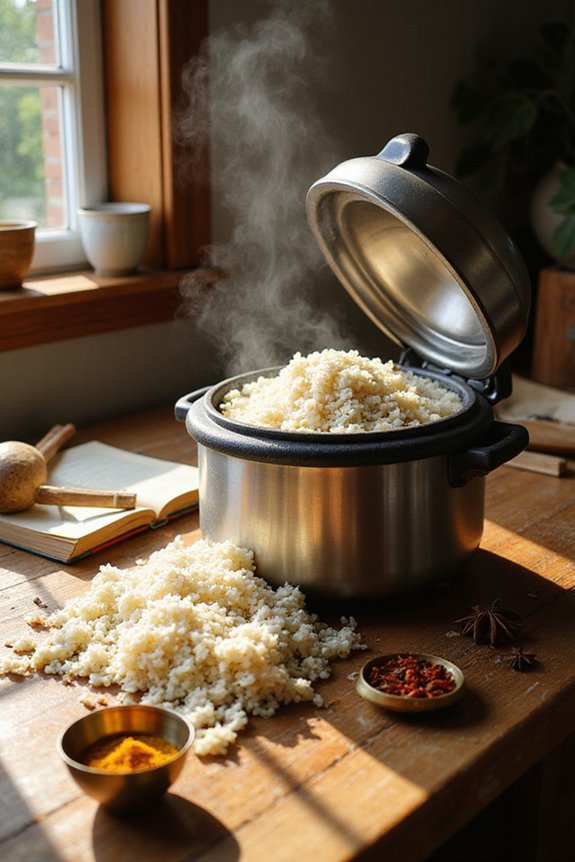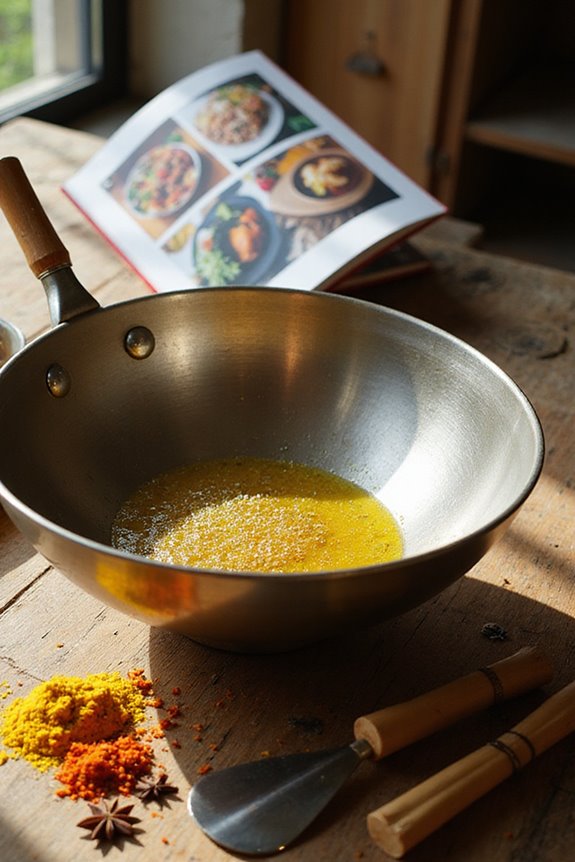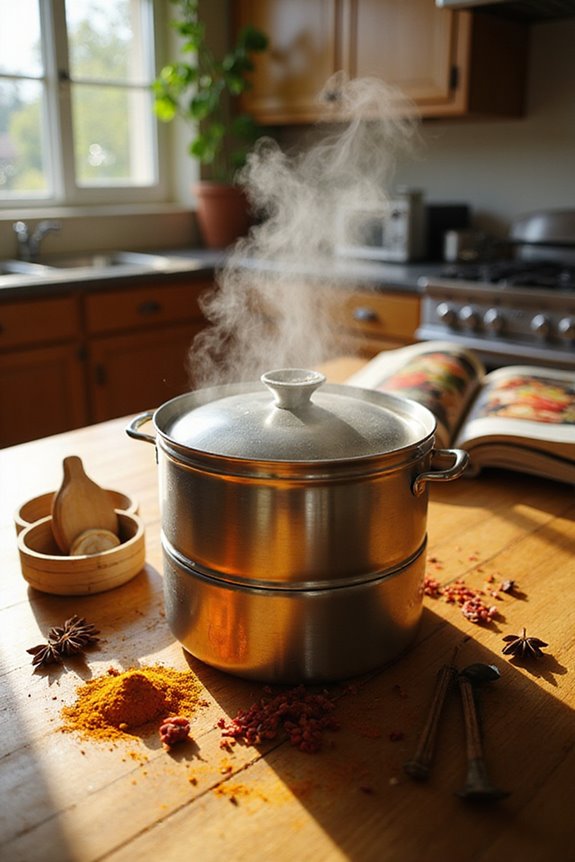To deep-fry without the pesky oil splatter, let’s get magical! First, we want our oil hot, between 350°F and 375°F. We can prevent splattering by patting our food dry and dusting it lightly with flour. When it’s time to add our goodies, lower them in slowly using tongs. Using a deep pot with thicker sides will help contain the heat. Follow these tips and we’ll turn our kitchen into a mess-free wonderland. Discover even more fantastic techniques ahead!
Key Takeaways
- Pat meats and veggies dry to remove moisture before frying, reducing the chance of splattering.
- Gradually immerse food into hot oil using tongs to maintain control and minimize splashes.
- Choose a deep pot with higher sides to contain the oil and reduce splattering.
- Monitor oil temperature closely; avoid overheating and ensure proper frying conditions to prevent mess.
- Lightly dust food with flour or cornstarch to create a moisture barrier, minimizing splatter during frying.
Proper Heating Techniques for Deep Frying
When we plunge into the delightful world of deep frying, the magic really starts with proper heating techniques! Getting the temperature right is essential for the most scrumptious results. Here’s what we need to remember:
- Temperature Control: Aim for oil between 350°F and 375°F (175°C to 190°C). Using a thermometer helps us stay on track, like a trusty sleigh guiding us through the snow!
- Oil Types: Choosing the right oil matters, too! Peanut, safflower, canola, or vegetable oils are our best friends here—they tolerate heat like pros! Additionally, using oils with high smoke points, such as sesame oil(10-health-benefits-of-sesame-oil) can enhance the flavor and nutritional value of your fried dishes.
Preheat the oil before adding food to avoid splatter and keep an eye on the heat. Trust us, a little attention goes a long way in serving up splendid fried treats! Let’s get frying, friends!
Food Preparation to Minimize Splattering
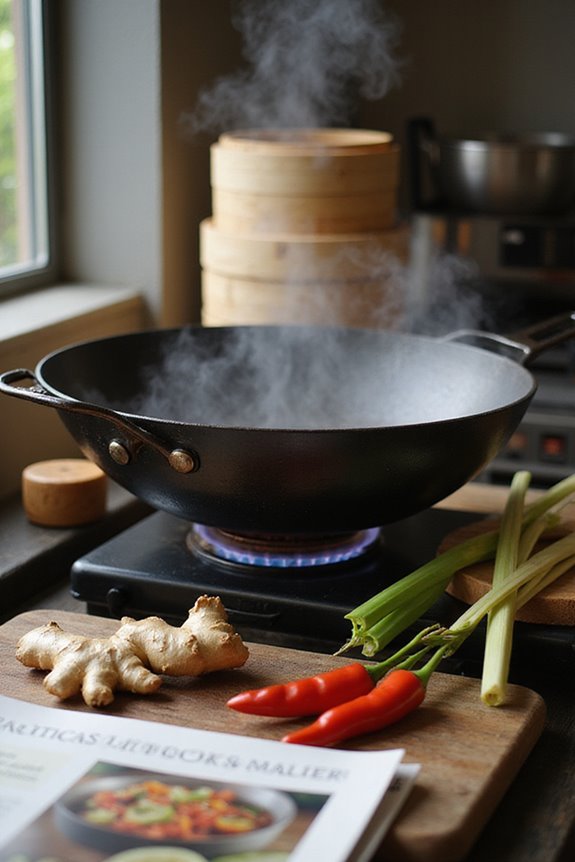
Getting our food ready is like wrapping gifts for the holidays—it’s all about the presentation and care we put into it! To minimize splattering, let’s focus on some delightful food drying and batter preparation tips.
- Pat it dry: Gently use paper towels on meats and veggies to brush away that pesky moisture.
- Batter bliss: Let excess batter drip off—too much, and we’ll create those splashy water pockets!
- Dust it lightly: A sprinkle of flour or cornstarch can serve as a magical barrier against moisture. Regular application of mineral oil helps maintain kitchen tools, ensuring they remain in top condition.
Safe Food Introduction Methods
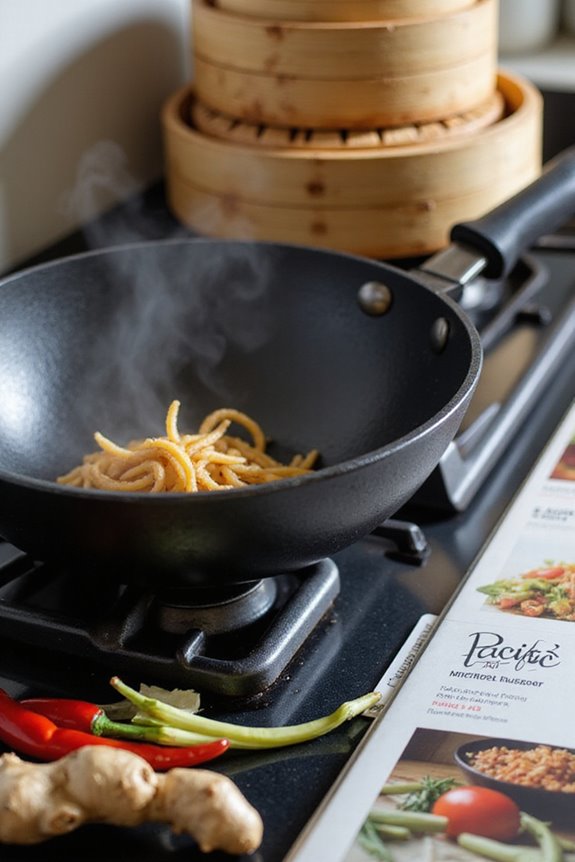
To make our frying adventures delightful and splatter-free, we need to embrace safe food introduction methods. First, let’s avoid water contact with hot oil—trust us, nobody wants a mini volcano in their kitchen! Next, remember that gradual immersion is key. Use tongs to lower food slowly into the oil; it’s all about control! An even coating of batter or seasoning keeps things clean and prevents debris from causing splatter chaos.
Also, let’s not overcrowd the pot—think of it like a party; too many guests can lead to a big mess! Finally, keeping an eye on the oil temperature means we’re less like a weather forecast gone wrong and more like the perfect deep-frying gurus. Using high smoke point oils is crucial for achieving the best Asian dish flavors while minimizing splatter. Happy frying, friends!
Equipment and Pot Selection
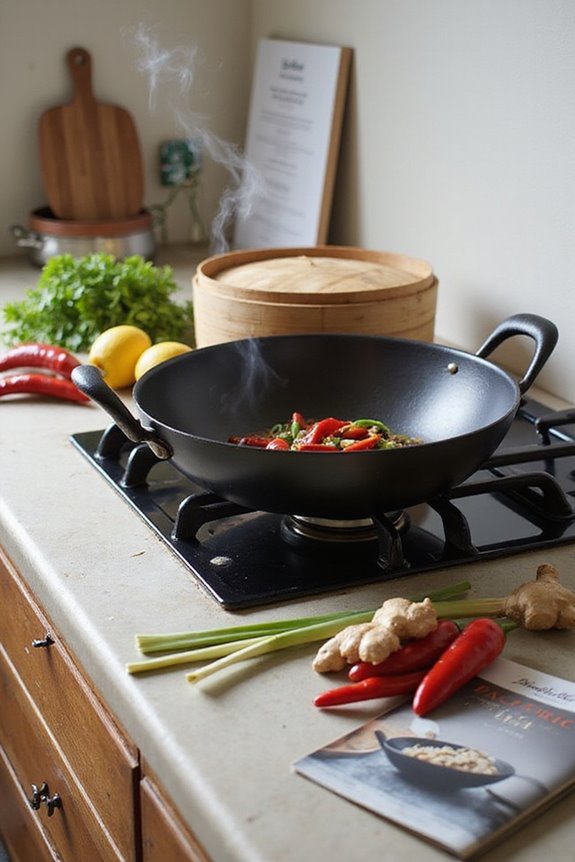
Choosing the right equipment for frying can turn a regular meal into a delightful culinary adventure! Here’s what we need to contemplate for frying success:
- Fryer Specifications: Look for pots with deeper sides to keep that oil contained.
- Pot Materials: Durable options like stainless steel or cast iron are our best bets. They handle high heat without warping, reducing splatter.
By using mesh frying baskets, we can minimize those pesky oil splashes. Remember to lower food slowly into hot oil for an even safer cook! And don’t forget those heavy-duty stainless-steel splash guards—they’ll keep the grease in check and make clean-up a breeze. Additionally, ensuring you choose pots with thicker materials can enhance durability during high-temperature frying.
Let’s make our frying experiences magical and splatter-free! Happy cooking, everyone!
Alternative Cooking Approaches to Avoid Oil Splatter
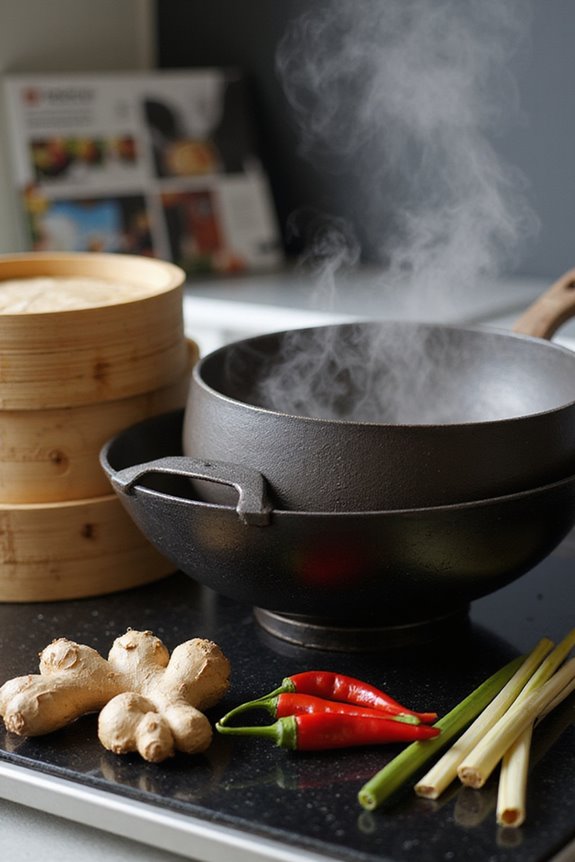
When we think about frying up our favorite foods, avoiding oil splatter can feel like a culinary puzzle, but don’t worry—there are delightful tricks to help us solve it! Why not make use of air frying for that crispy goodness without the mess? It’s like magic! Or try sous vide cooking; it locks in flavor without any splattering disaster.
Here are some quick tips:
- Pre-dry food: Moisture = splatters!
- Toss lightly in oil before frying to lessen splashes.
- Control temperature: Keep it steady, and avoid overheating!
- Consider using air fryer liners to prevent sticking and make cleanup easier.
With these approaches, cooking can be not only mess-free but also a joyful experience. Let’s get frying without the fuss!
Frequently Asked Questions
What Types of Oils Are Best for Deep Frying?
When it comes to deep frying, we love using refined oils for their high smoke points. Options like canola and peanut oil are our favorites, balancing flavor, health, and cooking stability for delicious results.
Can I Reuse Frying Oil Safely?
Absolutely, we can safely reuse frying oil by properly storing it to maximize its lifespan. Let’s remember to strain out food particles and keep it in a sealed container away from heat and light.
How Can I Safely Cool Down Used Frying Oil?
When cooling used frying oil, we should let it settle and strain it for clarity. Then, we can explore safe oil disposal methods to protect our environment, ensuring we’re caring for our community together.
What Should I Do if Oil Catches Fire?
It’s scary when oil catches fire, but with proper fire safety and emergency response, we can handle it. Remember, turn off the heat, cover the flames, and never use water—stay safe together!
How Can I Tell When Food Is Cooked Through in Oil?
When we cook, we rely on visual indicators like golden color and bubbling reduction. Monitoring cooking temperature is key, ensuring our food’s properly cooked, crisp, and inviting. Together, we can master the art of frying!

